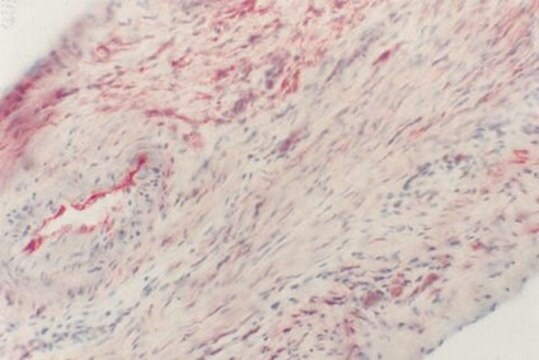L2137
Lipopolysaccharides from Salmonella enterica serotype minnesota
purified by gel-filtration chromatography
Sinónimos:
LPS
About This Item
Productos recomendados
origen biológico
Salmonella enterica (Serotype minnesota)
Nivel de calidad
formulario
lyophilized powder
purificado por
gel-filtration chromatography
impurezas
<1% Protein
color
white
solubilidad
water: 4.90-5.10 mg/mL, cloudy to hazy, colorless
Condiciones de envío
ambient
temp. de almacenamiento
2-8°C
¿Está buscando productos similares? Visita Guía de comparación de productos
Categorías relacionadas
Descripción general
Aplicación
- TRPV4 is not the molecular sensor for bacterial lipopolysaccharides-induced calcium signaling: This study explores the signaling pathways activated by lipopolysaccharides from Salmonella enterica serotype Minnesota, demonstrating that TRPV4 is not involved, advancing understanding of immune responses to bacterial endotoxins (Wang et al., 2023).
Acciones bioquímicas o fisiológicas
Nota de preparación
Otras notas
Producto relacionado
Código de clase de almacenamiento
11 - Combustible Solids
Clase de riesgo para el agua (WGK)
WGK 3
Punto de inflamabilidad (°F)
Not applicable
Punto de inflamabilidad (°C)
Not applicable
Certificados de análisis (COA)
Busque Certificados de análisis (COA) introduciendo el número de lote del producto. Los números de lote se encuentran en la etiqueta del producto después de las palabras «Lot» o «Batch»
¿Ya tiene este producto?
Encuentre la documentación para los productos que ha comprado recientemente en la Biblioteca de documentos.
Los clientes también vieron
Artículos
Explore the structure, function, and diverse applications of Lipopolysaccharides. Discover their role in bacteria, serological specificity, and research potential.
Contenido relacionado
Lipopolysaccharide (LPS) is a major component of Gram-negative bacteria, important for microbiological research.
Nuestro equipo de científicos tiene experiencia en todas las áreas de investigación: Ciencias de la vida, Ciencia de los materiales, Síntesis química, Cromatografía, Analítica y muchas otras.
Póngase en contacto con el Servicio técnico



